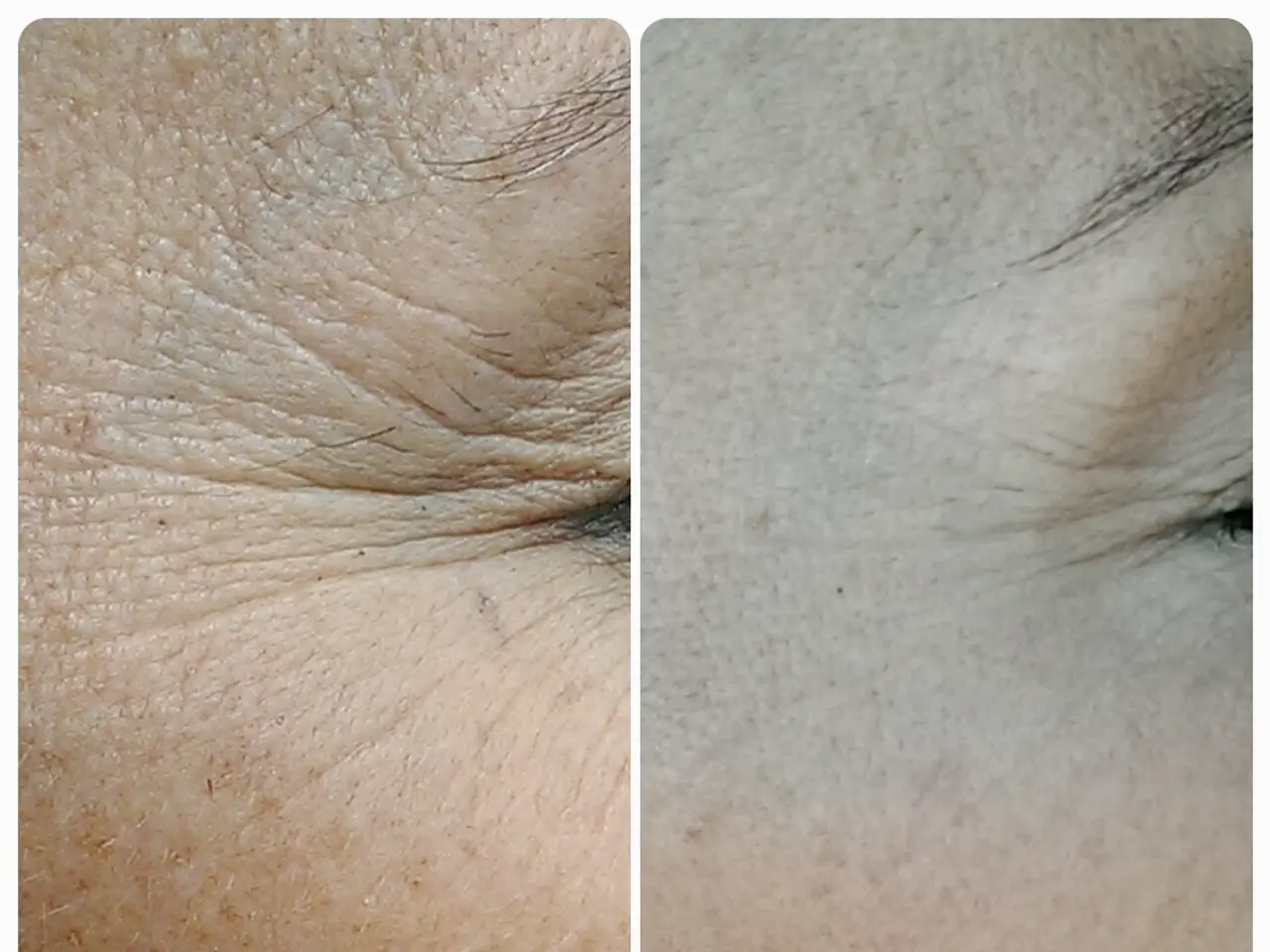Comparing Glycolic Acid and Salicylic Acid: Which One Rules the Skin Care Realm?
In the realm of skincare, two popular ingredients stand out for their ability to rejuvenate and revitalize the skin: glycolic acid and salicylic acid. Both are chemical exfoliants that work wonders for different skin concerns.
Glycolic Acid: The Surface Exfoliant
Glycolic acid, an alpha hydroxy acid (AHA), is derived from sugar cane. It exfoliates the skin by dissolving the bonds between dead cells, revealing a smoother complexion [1]. This surface exfoliant is ideal for brightening, texture smoothing, and addressing aging concerns, making it suitable for dry to normal skin [2][4][5]. Glycolic acid also stimulates collagen production, which helps maintain youthful-looking skin and reduces fine lines and wrinkles [1].
Salicylic Acid: The Pore-Penetrating Exfoliant
On the other hand, salicylic acid is a beta hydroxy acid (BHA) that is oil-soluble. This property allows it to penetrate deeply into pores, breaking down excess oil, dirt, and inflammation inside the pores [4]. Salicylic acid is particularly effective for oily and acne-prone skin types, as its ability to reduce oil and unclog pores makes it an excellent choice for various skin concerns like acne breakouts or blackheads [2][4].
Acne Treatment
Both acids help treat acne, but studies show salicylic acid leads to a slightly higher reduction in acne (74%) compared to glycolic acid (70%) [2]. This makes salicylic acid a preferred choice for oily, acne-prone skin, while glycolic acid is a good option for acne in dry skin.
Using Glycolic and Salicylic Acids Together
To experience the benefits of both acids without risking over-exfoliation or irritation, they can be used in alternating days. When adding glycolic acid into your routine, it's best to start slowly with lower concentrations (around 5-10%) [3][5]. Similarly, salicylic acid should be introduced gradually to avoid dryness as a common side effect.
Skin Sensitivity Considerations
Glycolic acid can be irritating to sensitive skin at higher concentrations, so lower concentrations (under 5%) are recommended for sensitive skin [3][5]. Salicylic acid is generally well-tolerated by oily and acne-prone skin but may be drying if overused.
In summary, glycolic acid is a surface exfoliant suited for brightening, texture smoothing, and aging concerns, ideal for dry to normal skin, while salicylic acid is a pore-penetrating exfoliant best suited for oily and acne-prone skin types [1][2][4][5]. Both acids can cause purging in the early stages of use, but with careful introduction and use, they can significantly improve the appearance and health of your skin.
[1] Healthline. (2021). Glycolic Acid: Uses, Benefits, Side Effects, and More. [online] Available at: https://www.healthline.com/health/glycolic-acid
[2] Paula's Choice. (2021). Salicylic Acid: Uses, Benefits, Side Effects, and More. [online] Available at: https://www.paulaschoice.com/expert-advice/ingredients/acne-treatment-ingredients/salicylic-acid.html
[3] Byrdie. (2020). Glycolic Acid: The Ultimate Guide. [online] Available at: https://www.byrdie.com/glycolic-acid-5527008
[4] Verywell Health. (2021). Salicylic Acid: Uses, Benefits, Side Effects, and More. [online] Available at: https://www.verywellhealth.com/what-is-salicylic-acid-5087249
[5] DermNetNZ. (2021). Glycolic acid. [online] Available at: https://www.dermnetnz.org/topics/glycolic-acid/
- Incorporating retinol into your skincare routine alongside glycolic or salicylic acid can enhance their effects, providing comprehensive skincare benefits.
- A toner is a vital step in a skincare routine, as it helps balance the skin's pH levels, preparing the skin for optimal absorption of skincare products such as serums and moisturizers.
- Although glycolic acid is suitable for both dry to normal skin and addressing aging concerns, it's essential to apply sunscreen daily to protect your skin from UV damage and potential sensitivity.
- When using glycolic and salicylic acids together, it's crucial to maintain a balanced skincare routine that includes a cleanser, moisturizer, and possibly a skin barrier strengthening product to prevent over-exfoliation and potential irritation.
- Exfoliation with salicylic acid may help manage acne-prone skin by reducing inflammation and unclogging pores, but it's important to be cautious, as salicylic acid can cause dryness and irritation if overused.
- Following a consistent skincare routine, which may involve products containing glycolic acid, salicylic acid, or both, can contribute positively to one's overall health-and-wellness lifestyle and even be an essential aspect of one's fashion-and-beauty habits.
- Alongside skincare products that contain glycolic acid or salicylic acid, incorporating a serum into your routine can provide additional skin benefits, such as moisture or anti-aging properties.
- If you have sensitive skin and wish to incorporate glycolic acid into your skincare routine, consider opting for gentle, low-concentration products, or consulting with a dermatologist for personalized advice.




